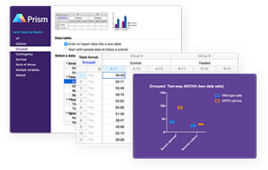A volume that can be recommended to both statisticians and life scientists
 |
The review this month is for Statistical and Computational Pharmacogenomics, an interdisciplinary text by CRC. It turned out to be an exceedingly pleasant experience, as it is a volume that can be recommended to both statisticians and life scientists. Yes, there’s plenty of heavy-duty math for the theory lovers (your editor included), but there are also many sections of explanations for the biologist. These explanations are not highly theoretical and give the scientist a better understanding of what the analysis is doing and why it is needed. By the authors’ statement in the preface we get an idea of what they are trying to do:
“This book intends to provide geneticists with the tools needed to understand and model the genetic variation for drug response based on genomic data collected in a mapping population and to equip statisticians with the motivation and ideas used to explore genomic data.”
Unfortunately, by this definition, the authors have excluded the very important and actively pursued area of microarray analysis, which is central to drug discovery and helpful in elucidating pathways and understanding the complex nature of drug reactions and interactions. Although there is a 2003 volume in the CRC series on this topic, it is almost ancient history.
As an overview, consider the chapter headings that start with ‘Design and Strategies for Genome Mapping and Haplotyping,’ proceed through haplotyping in natural populations and experimental crosses, functional mapping, pharmacokinetics and pharmacodynamics (PK/PD), biological clocks, allometric scaling, drug efficacy/toxicity/response and, finally, end with nonparametric and semiparametric functional mapping of drug response. This is obviously geared to the QTL (quantitative trait loci) and SNP (single nucleotide polymorphisms) crowd, but is still very useful for its focus on exploring drug response and kinetics.
The biological background given for the statisticians is usually very complete and tersely written, so that the essentials are easily absorbed. The section on Hardy-Weinberg Equilibrium uses the standard algebra and will be easily absorbed by the biologists. The concluding section on Functional Mapping of Drug Response provides a short and very lucid summary of the rationale behind the recent mathematical treatments and is a nice (albeit too brief) explanation of what the math actually does.
Starting in chapter 2, ‘Genetic Haplotyping in Natural Populations,’ the mathematics starts to get a bit more challenging and sections on Likelihoods and the EM algorithm, although possessing verbiage for guidance, will be difficult for non-statisticians to absorb. By the time we get to sampling variance of parameter estimates, the readers had better be up on their calculus and matrix algebra. Parts of the explanatory paragraphs are helpful in explaining shortcomings of the math and the ways these problems have been solved, but too much seems to be directed to the mathematically adept. As a general rule, the authors alternate between some heavy-duty math and some clear explanations for what is actually being done mathematically to the biological system. This is very useful in understanding just how the math is modeling the physical reality. Life scientists would be advised to read the first and last sections of each chapter before proceeding to the details in the middle.
Of particular interest will be the chapters on ‘Haplotyping Drug Response by Linking Pharmacokinetics and Pharmaco-dynamics’ and the last two chapters on ‘Nonparametric and Semiparametric Functional Mapping of Drug Response.’ The former discusses mathematical aspects of detecting genetic variants that control PK/PD processes and may integrate them, while the final chapters discuss use of mathematical functions to map dynamic genetic control of life functions (as related to PK/PD) and the shortcomings of standard, parametric models when no closed form solutions exist. In some instances, due to the changing dynamics of a system with differing developmental phases in which many genetic and environmental factors are involved, a single model may not be adequate. In these cases, the authors offer semiparametric methods for modeling.
Other than the lack of microarray discussion and too brief explanations regarding many of the mathematical treatments, only the index was bothersome. As with practically all modern texts, the index is exceptionally non-informative. Valuable references to such areas as repeated measures and crossovers in drug therapy are not listed, for example, and listing multiple pages under very broad categories such as ‘gene’ is not at all helpful. It might be useful for academicians to hire their graduate students and postdocs (for a few extra dollars) to do a very comprehensive review of each chapter. This would be most helpful to the readers, as information retrieval is becoming even more important than content, given the massive amounts of data, theory and papers inundating the modern scientist.
Availability Statistical and Computational Pharmacogenomics, by Rongling Wu and Min Lin. CRC Press, Boca Raton. 346 pp., ISBN: 1584888288, $79.95 (2009).
John Wass is a statistician based in Chicago, IL. He may be reached at [email protected].




